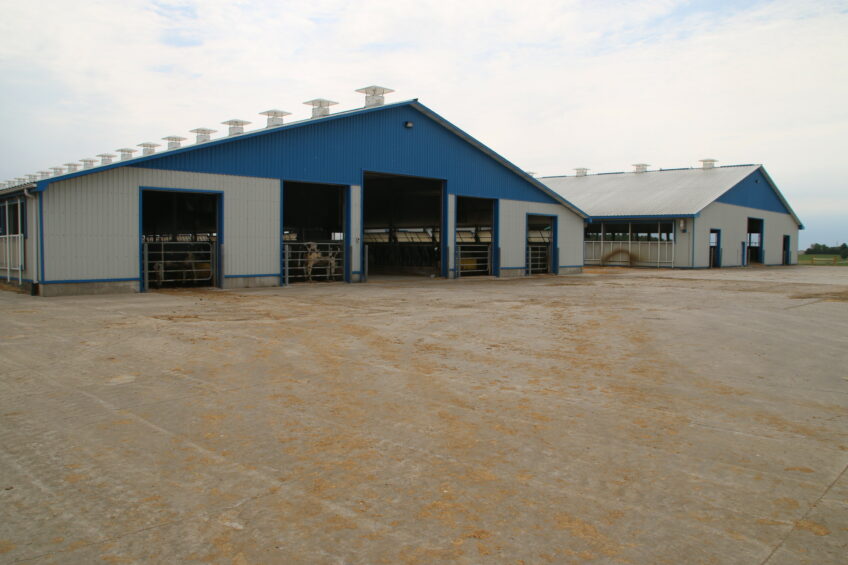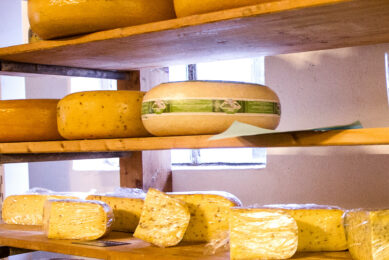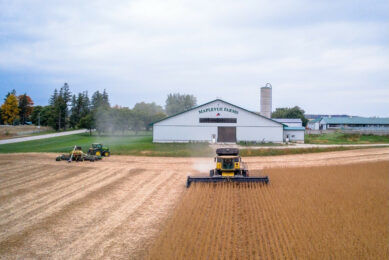Dutch dairy farmers prefer Ontario

For many years Canada has attracted farmers from all over the world to experience a better life. The Netherlands has a thriving dairy industry but even so, many Dutch dairymen have, over the years, decided to sell up and move to ‘pastures new’.
Henk and Dimi Kremers moved with their family to Elgin County, Western Ontario 17 years ago. “We farmed in the North West part of the Netherlands, known as a very picturesque region. However, it attracted a lot of tourists who affected our dairy business plus there were ever increasing environmental issues to contend with, so we decided to sell up and emigrate,” explained Mr Kremers.
More cows than average
Mr Kremers and his family, farm a total of 320 acres/129ha, both owned and rented, in Elgin County, which is one of Ontario’s most fertile areas. Corn silage is grown on 200 acres/81ha with the remaining 120 acres/48ha put down to grain crops. Mr Kremers and his son milk 215 cows; 213 Holsteins and 2 Jerseys. This number is well above the Ontario herd average of 70 cows.
The Kremers family also have 40 dry cows and 230 young stock. Calving takes place the year round. Farms operate under a quota system, with quotas being tradeable, but in practice, this is not easy. Farmers are paid based on fat, protein and Solids Not Fat (SNF) and there are six categories of milk quality. Mr Kremers was paid $ 0.74 / kg although the milk price had dropped by $ 0.07- $ 0.08 over the last two years. Milk is hauled by tanker to the dairy, which is located in Toronto. Hygiene regulations are understandably important and Mr Kremers jokes that he can’t just dip into his bulk tank to get milk for his breakfast cereals. He has to go and buy it from his local supermarket, just like any other consumer.
Unlikely to install robotic milking
Ontario farmers have to follow an extensive detailed ‘Code of Practice for the Care & Handling of Dairy Cattle’, which cover all aspects of dairying. For example there is a section relating to tail docking, which states “Cows must not be tail docked unless medically necessary”. The Kremers installed a 28-point Westfalia rotary parlour fitted with Surge equipment, in 2007. “The cows are milked twice daily although some farms milk three times a day,” commented Mr Kremers. “On some farms, the high yielders get milked three times a day, whereas the low yielders just go through the parlour twice every 24 hours.” Mr Kremers is unlikely to replace his rotary with robots as in his opinion cows milked by robots consume more concentrates than cows being milked through a rotary, hence increasing the animal feed bill. The cows are housed in large airy barns with several chimneys spaced along the ridge to give adequate ventilation.
Housing and health care
The barns have slatted floors with slurry pits, which are 2.4m deep. A TMR feed policy is in place with feed being delivered down a central feed passage. Large concrete bunkers hold the corn silage whilst a number of silos store corn (maize), soya beans, canola and minerals. Semen is sourced from ABS Global and Select Sires Inc with Mr Kremers cautioning that selecting the correct bulls is vital as he feels that inbreeding is getting to be a problem. Calves are fed acidified milk by means of a milk machine and the local veterinarian comes in to dehorn the calves as required, although the Ontario Code of Practice does state that trained farm staff are allowed to carry out this task. The veterinarian also does the pregnancy checks as well as dealing with any routine veterinary matters.
The ideal mindset
As far as the future is concerned, predictions in farming are always fraught with difficulty. The Kremers have a large herd by Ontario standards .This is advantageous with regard to buying strength. Family farmers are happy to work all hours compared to hired labour, to ensure that the business is, and continues to be, successful. A tidy farm with clean yards is an indication of high standards and attention to detail which transfer to the dairy business in general and the Kremers have the ideal mindset to successfully cope with any challenges that the future might bring.
Join 13,000+ subscribers
Subscribe to our newsletter to stay updated about all the need-to-know content in the dairy sector, two times a week.













